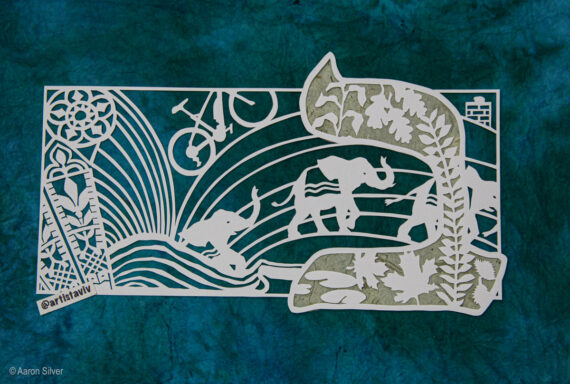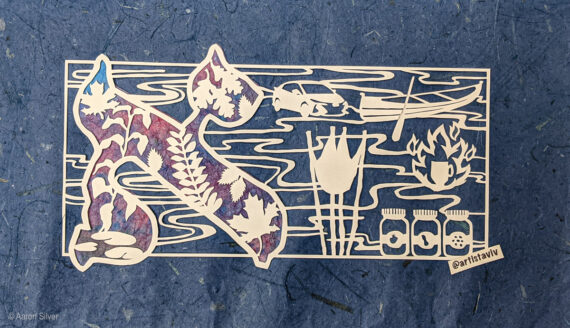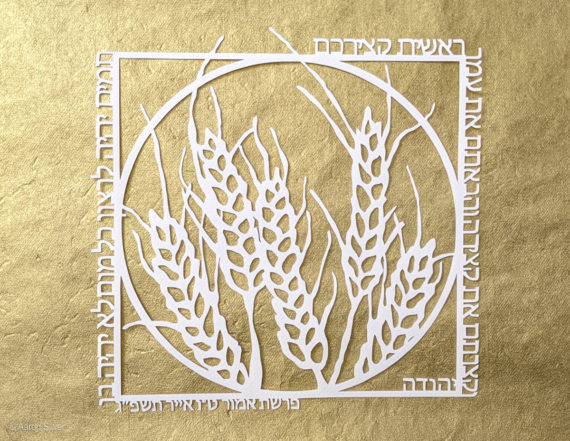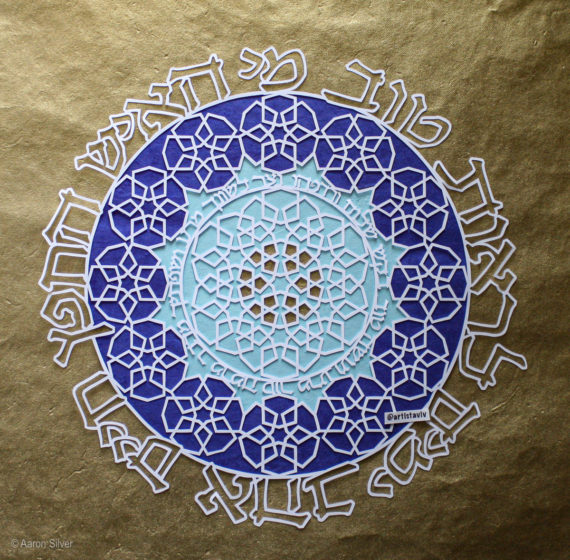These last few days I’ve been getting ready to begin laying the Yiddish text into the pit, where I already placed a person and prison bars at the bottom. My original intention was to use the whole Yiddish text, but as I started working with it, I realized that it’s too long to use all of it. If I were to use the entire text, the balance and impact of the piece would be diminished, I think.
 So I’ve been delving into the details of the text, debating with myself as I try, again, to focus in on the parts of the tehineh that are most relevant to the spirit of this papercut. Ultimately, I decided that I have to let go of the middle section. That’s the part which essentially says to “please elevate our luck so that we aren’t falsely accused and sit forever in prison.” That’s relevant to some of the larger issues of racism and mass incarceration – Black people are more likely to be falsely convicted and more likely to wallow in prison for longer periods of time … but for the purposes of this piece of art, I am going to only focus on imprisonment itself and releasing people from that imprisonment, which all of the text that I’m keeping is about. And keeping Joseph is essential. Maybe I can use some of the left-behind text in a future piece.
So I’ve been delving into the details of the text, debating with myself as I try, again, to focus in on the parts of the tehineh that are most relevant to the spirit of this papercut. Ultimately, I decided that I have to let go of the middle section. That’s the part which essentially says to “please elevate our luck so that we aren’t falsely accused and sit forever in prison.” That’s relevant to some of the larger issues of racism and mass incarceration – Black people are more likely to be falsely convicted and more likely to wallow in prison for longer periods of time … but for the purposes of this piece of art, I am going to only focus on imprisonment itself and releasing people from that imprisonment, which all of the text that I’m keeping is about. And keeping Joseph is essential. Maybe I can use some of the left-behind text in a future piece.
So once I have the text chosen, I get it into a text layer in Photoshop at approximately the font size I want. Then I rasterize that text layer, turning it into pixels. Then I cut each individual letter out into its own layer, grouping letter-layers together into words. I’ve included a picture of part of my layer organization (click to enlarge). Then I place individual letters into the design, making sure that no letter or letter-part (I’m looking at you, yuds and hays!) or vowel is floating, unattached. Yiddish presents more of a challenge here than Hebrew, because I have to worry about the occasional dagesh (dot that floats inside a letter) and the vowels under alephs, which aren’t present in Hebrew.
As I’m putting letters into place, I have to constantly ask myself: Is everything kind of in order? Is it theoretically legible? Are there some interesting but still readable shapes being created by both the positive and negative space? I’m also making larger those words that I am more interested in; for example “imprisoned” is larger than “and you should.”
And I want to add that I am not fluent in Yiddish, so I’m leaning on some supportive sources to check that I’m understanding the text correctly.
While I was working on this today, I was listening to the most recent episodes of the podcast “16 Shots,” about the fatal police shooting of Laquan McDonald.






